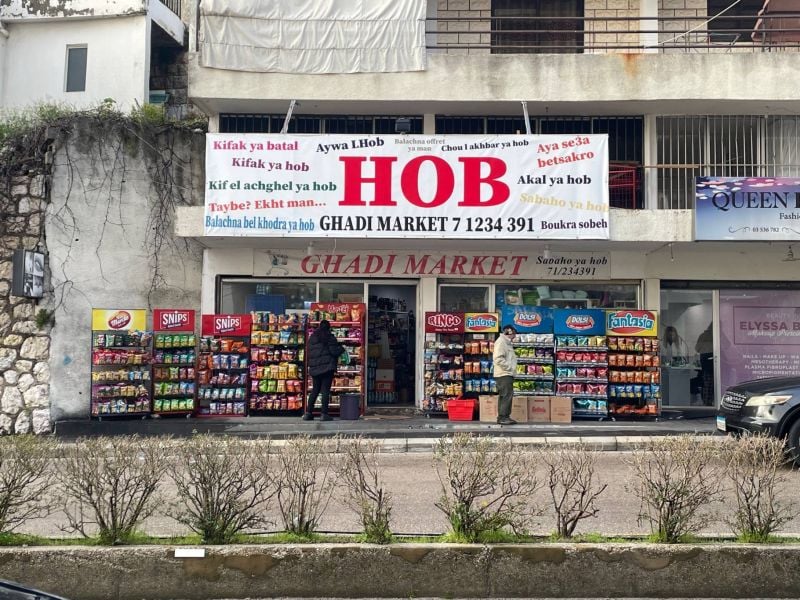
A convenience store in the mountains of Rayfoun (Kesrouan). (Credit: PHB)
After almost five years of crisis, marked by galloping inflation caused mainly by the collapse of the national currency, the rise in the consumer price index (CPI) in Lebanese pounds has slowed markedly since the start of the year and is now showing a double-digit annual growth rate, the first time this has happened since June 2020.
The CPI shows an annual growth rate of 70.36 percent, for a monthly change of 1.72 percent, according to the latest update from the Central Administration of Statistics published on Monday.
The explanation for this slowdown is quite simple: in March 2023, the exchange rate ended an insane surge which had taken it from LL 40,000 to LL 140,000 to the dollar between Jan. 1 and March 21. It then fell back to around LL 105,000 by the end of the same month, before stabilizing at its current level of LL 89,500 to the dollar in the following months. Prices in pounds depend largely on these fluctuations, and global inflation (7 percent in 2023 according to International Monetary Fund estimates) has logically had less impact on variations in the CPI, which measures prices in lira.
High inflation
The inflation reflected in the index is nonetheless very high, and has also been driven by the adjustment to the market exchange rate, at the end of January, of the last taxes and levies which were still calculated at the old official parities introduced by the authorities (LL 1,507.5 to the dollar until February 2023, then LL 15,000). This phenomenon is exacerbated by the fact that salaries across the country have not kept pace. Administrative salaries, for example, have increased by a factor of nine compared with their pre-crisis level, while the exchange rate has increased by a factor of 60. Adjustments have been more substantial for part of the private sector.
In monthly terms, clothing prices showed the strongest rise, at +5.11 percent (+39.48 percent in annual terms), ahead of housing costs (+2.57 percent in one month and 108.31 percent in one year), and finally food and non-alcoholic beverages (+2.43 percent in one month and 51.37 percent in one year).
Two CPI sub-indices posted slight declines, again on a monthly basis: Health spending (-0.69 percent in one month, up 45.01 percent in one year) and telecommunications (-0.1 percent in one month and 28.89 percent in one year).
In March, the CPI finally rose on a monthly basis in all regions of the country. North Lebanon led the way (+2.81 percent), ahead of Beirut (+1.71 percent), Mount Lebanon (+1.59 percent), Bekaa (+1.28 percent), South Lebanon (+1.24 percent) and Nabatiye (+0.81 percent).
The April CPI will be published by ACS around May 20.
This article originally appeared in French in L'Orient-Le Jour.